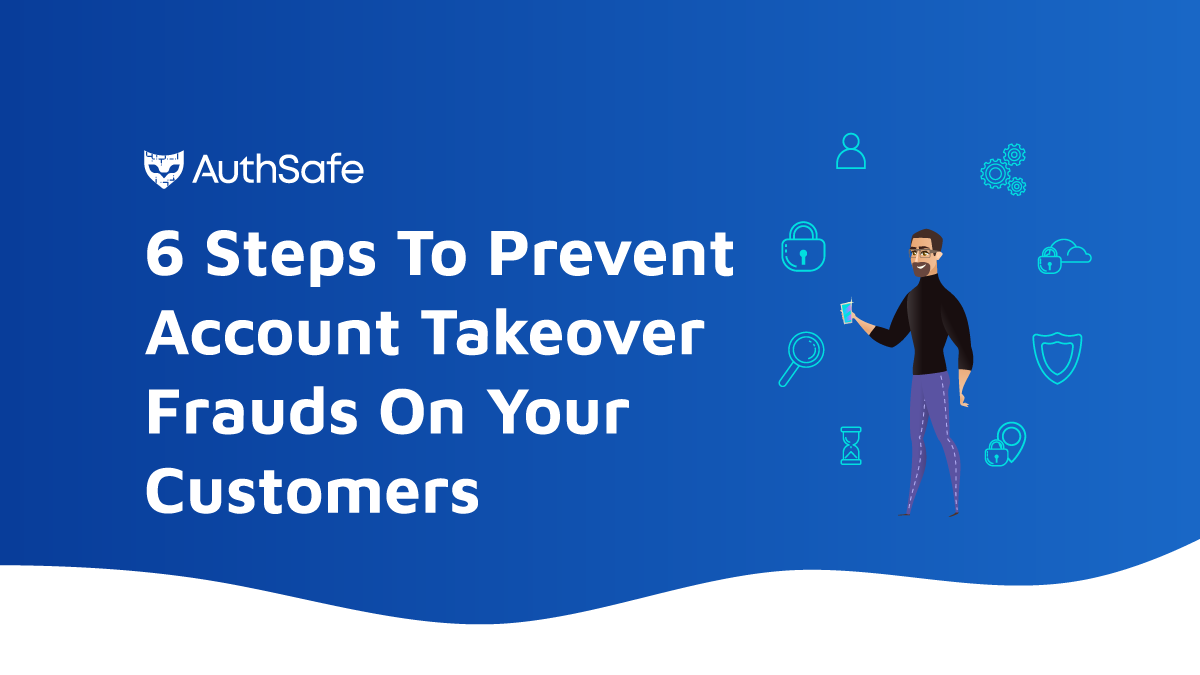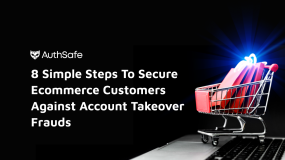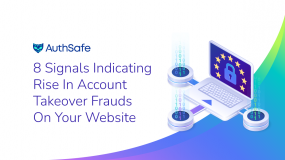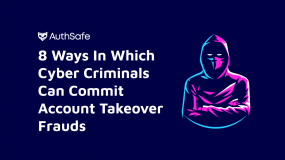
Are you tired of feeling like you’re constantly playing defense against cybercriminals trying to take over your accounts?
Account takeover fraud is a type of cybercrime in which an attacker gains access to someone’s online account, typically by stealing their login credentials and using them to impersonate the account holder for fraudulent purposes. This can involve making unauthorized transactions or purchases, stealing sensitive information, or using the account to spread malware or spam.
There are many ways that attackers can gain access to login credentials, such as through phishing attacks, malware infections, or by simply guessing or cracking passwords. Once they have access to the account, they can use it to perform various types of fraud, including identity theft, financial fraud, or other types of scams.
Account takeover fraud can be dangerous and you need to take precautionary measures. That’s why it’s important to take these 6 steps to prevent account takeover.
6 steps to prevent account takeovers
By following these six simple steps, you’ll be able to fortify your accounts and keep the hackers at bay. From password managers to two-factor authentication, these tips will give you peace of mind and protect your personal information. So put on your cyber security hat and let’s get started on taking control of your online presence.
1. Don’t use the same password everywhere
Passwords are a pain. And they’re a pain because they’re so easy to forget. Even after being the victim of a phishing attack, 57% of people continue to use the same passwords. But if you want to protect against cyber criminals, it’s time to change your ways.
The best way to protect yourself from account takeover fraud is by using different passwords for all your accounts—and then making sure those passwords aren’t easy to guess (like your birthday or a famous person’s name).
It may seem like a hassle at first, but once you get into the habit of using different passwords everywhere and making them strong, it’ll become second nature. And like any good habit that protects your peace of mind!
Even if you’re trying to be smart by using a different password for every account, you might still be at risk. Hackers can check whether your email address is associated with any other platforms and then try to guess your password.
Let’s say you use the same password for both Facebook and Instagram—and then one of those sites gets hacked. Now hackers have access to your username and email address, so they can try guessing new passwords on other sites that use the same login as well: Facebook Messenger, Gmail, etc.
That’s why it’s a good idea to keep things separate!
2. Use MFA
Multifactor authentication is a great way to ensure your account is safe from takeover. When you set up MFA on your accounts, you’ll need to use more than just your password to access them. You’ll have to enter a code sent via text message or an app like Google Authenticator.
This means that anyone who tries to access your account will need access to your phone or the app—which means they won’t be able to get into it without having physical access to your phone.
MFA could be one of the best ways to prevent account takeover because it makes it much harder for someone who doesn’t have access to your phone itself (and therefore can’t get into the two-factor authentication) to get into.
3. Set up alerts to catch strange activity early on
These days, it’s too easy for a hacker to hijack your account and wreak havoc on your life. You can’t be everywhere at once—but you can set up alerts so that you know when something is amiss.
For example, if you have a Gmail account, you can set up an “Unusual sign-in” alert. This way, you’ll get an email anytime someone logs in from a device or location that isn’t normal for you.
Other platforms also offer similar features. For instance, Facebook has a “Login Review” feature that lets you check on any suspicious activity in real time, while Twitter has a “Security Center” tab where users can see their current level of security and take action as needed.
4. Keep your recovery information updated
This is a big one.
If you ever lose access to your account, it’s important to have up-to-date recovery information to get back in as quickly as possible. Your recovery information includes your phone number, email address, and recovery question answer. If you have 2FA enabled, this is your backup code.
We recommend checking these details every few months to ensure they’re still accurate. This is especially important if you’ve recently moved or changed your phone number!
5. Consider using a password manager
Passwords are one of the first things that hackers try to crack when they’re trying to take over an account. That’s because most people use the same password for more than one account, so if someone manages to crack the password for your email address, they can easily use it to get into your bank account or social media accounts.
Using a password manager like LastPass or Dashlane means you only need to remember one super-strong password, and the rest will be stored in an encrypted vault. Some of these services automatically generate new passwords when you sign up for new sites or apps!
6. Firewall
A firewall is a network security system that monitors incoming and outgoing network traffic, allowing only authorized communications to pass through. A firewall can be installed on your computer, a single device, or an entire network.
It is used to keep unauthorized computers from accessing your computer or network and prevent data from leaving the network.
A firewall blocks all unsolicited incoming traffic, including malicious code, hackers, and IP addresses identified as harmful or suspicious. You can also configure your firewall to allow specific types of traffic in, such as email or web browsing requests.
AuthSafe can help you to set up a firewall to protect your accounts.
Takeaway
Account takeover fraud is a growing threat – but there are ways to stop it from happening to you. The bottom line is that you need more than just a password to secure your accounts – use unique passwords, protect them with a firewall, and enable two-factor authentication.
Of course, it’s very unlikely that your bank will let you use the same password on a site like Twitter. So, what then? The best solution is to keep your most important logins separate from others using secure applications.
Connect with us today to protect yourself against account takeover frauds






